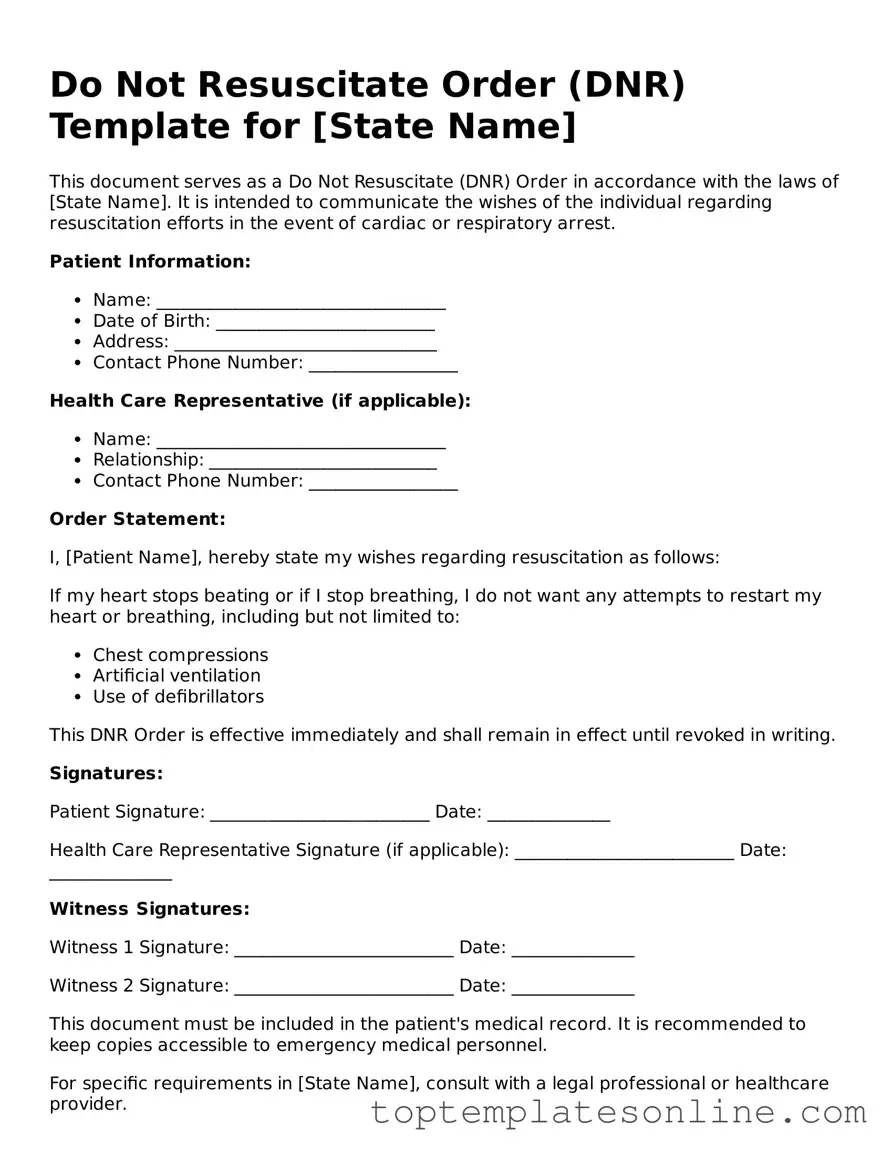Attorney-Approved Do Not Resuscitate Order Form
A Do Not Resuscitate (DNR) Order is a legal document that allows individuals to refuse life-saving medical interventions in the event of cardiac arrest or respiratory failure. This form ensures that a person’s wishes regarding resuscitation efforts are respected by healthcare providers. Understanding the implications of a DNR is crucial for making informed decisions about end-of-life care.
Customize Do Not Resuscitate Order Here
